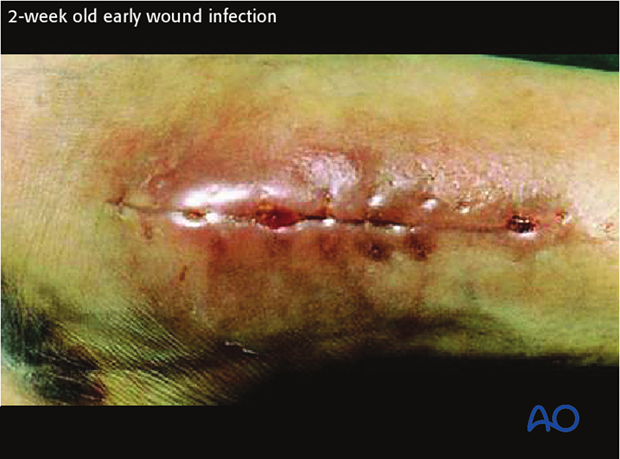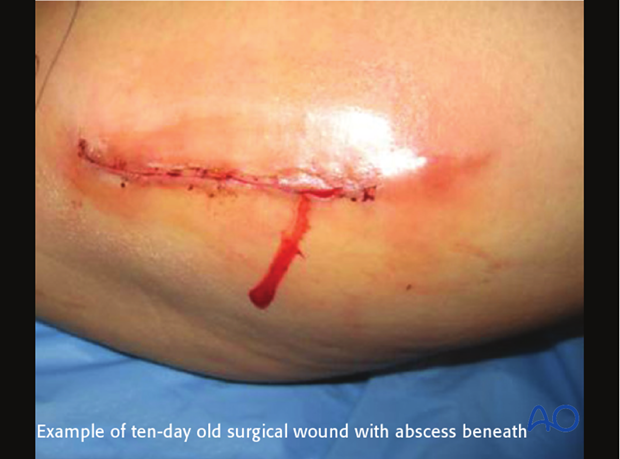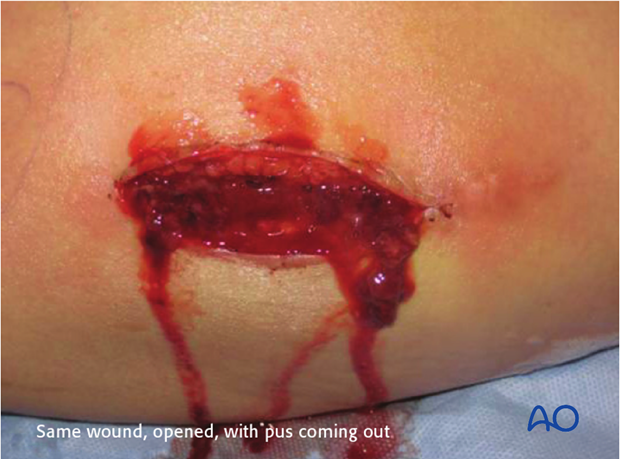Early infection
1. Early infection
Clinical signs
Early infections generally occur less than 2 weeks after surgery. Their clinical signs are
- increasing local pain
- lymph node swelling
- redness
- swelling
- wound seepage
- disturbed wound healing
- fever
Typically, infecting organisms are highly virulent (S. aureus, gram-negative bacilli). Clostridial infections (gas gangrene, or tetanus) are important early infections: as anaerobic organisms, they proliferate in any dead tissue remaining in the wound.

Surgical treatment
Early infections need prompt surgical treatment by wide exploration and surgical excision of all ALL infected and dead tissue (débridement), as well as adjunctive systemic antibiotics, guided by microbiological studies, whenever possible.
Such infections are never “superficial”, as the entire fracture wound is always involved. Only surgical exploration allows comprehensive assessment and care.
In addition, tissue samples taken at this time offer the chance to culture organisms hidden in biofilms.
Neglect allows the infection to progress to a point where much more extensive tissue death occurs.

Internal fixation
When symptoms have been present for less than 2 weeks, and internal fixation implants still provide absolute stability, it may be possible, after thorough débridement, and with appropriate antibiotics, to retain them until the fracture is healed. Should the infection fail to improve rapidly, repeated surgical clearance, including implant removal with alternative fixation, will become necessary.














